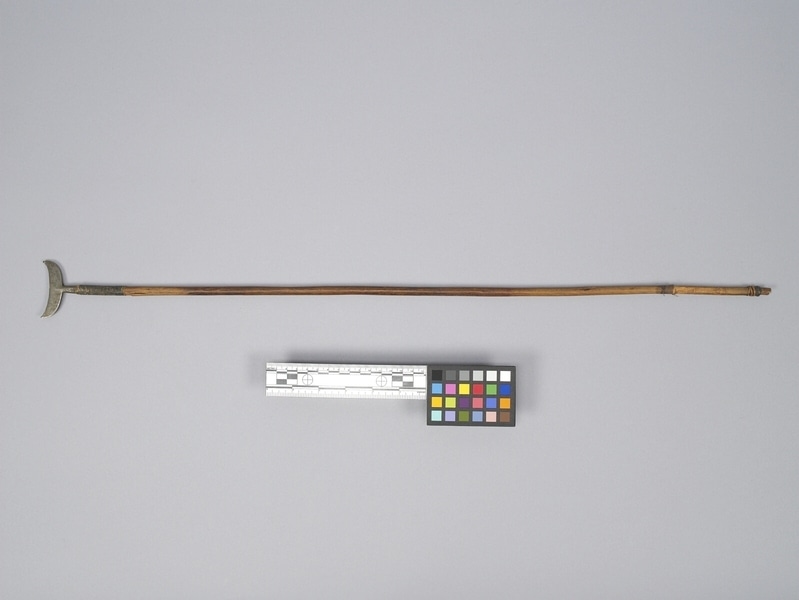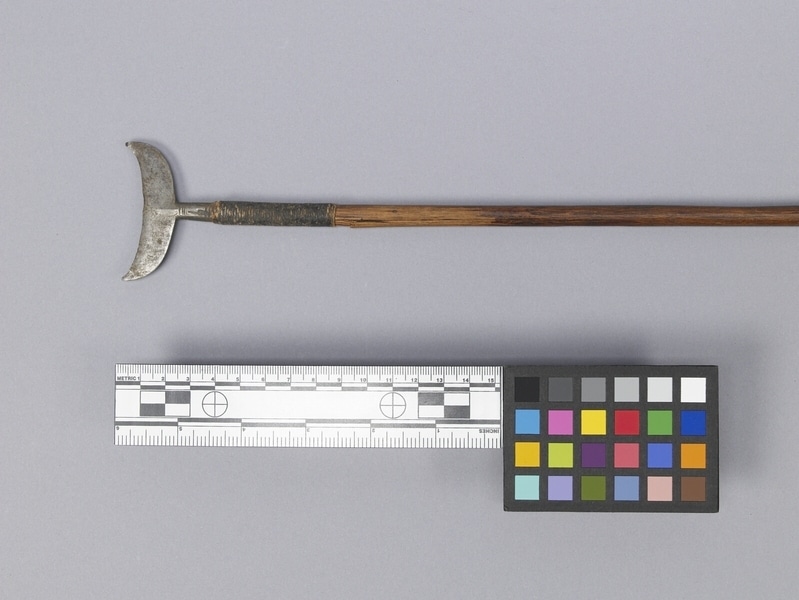Arrow Item Number: Ac237 from the MOA: University of British Columbia


Description
Brown patinated wood shaft that has one end inserted with tang of metal arrowhead then lashed with fibre cord, always touching, never overlapping as it winds around the shaft's circumference. Head composed of two wide long barbs which are curving abruptly forward. Tang incised with groupings of small parallel lines on both sides. Shaft's butt end is notched and whipped with fibre in two places.
History Of Use
Used for weapon in warfare and hunting, although guns were increasingly used in warfare. Hunting was often conducted by a hunting-class among the Chokwe; there was considerable social and religious prestige associated with hunting. Chokwe peoples conducted hunts communally, whether as a village or as a group of villages banded together as one group. Collective hunts, whether by the hunting-class or by a communal group, occurred during the spring and summer, when the grass was high. Collective hunters would divide into two groups: one would light grasslands aflame and drive animals downwind, the other would capture and kill the animals fleeing. Individual hunting was also a profession. A professional hunter, known as a chianga or nyanga, would often be a small farmer in the off season. Hunters make their own arrow shafts with feathers; points are made by village blacksmith. The shape of the point on this arrow suggests a particular target or shooting context. Arrows are carried into field in a quiver of skin or woven basketwork. Arrow would have been used with bow taller than a person.
Cultural Context
Hunting
Narrative
The collector, Nellie Taylor, served as a nursing missionary (1900-1920), first with the Ovimbundu at Bihe, then with the Chokwe at luma Kasai. She belonged to a group who sponsored several missions across Central Africa from 1881-1931.
Specific Techniques
Whipping underneath self-nock prevents shaft from splitting past fibre if arrow is shot incorrectly.
Item History
- Made in Luma Kasai, Angola before 1920
- Collected between 1900 and 1920
- Owned by Nellie Taylor
- Owned by Gladys G. Cameron before January 12, 1979
- Received from Gladys G. Cameron (Donor) on January 12, 1979
What
Who
- Culture
- Chokwe
- Previous Owner
- Nellie Taylor and Gladys G. Cameron
- Received from
- Gladys G. Cameron (Donor)
Where
- Holding Institution
- MOA: University of British Columbia
- Made in
- Luma Kasai, Angola
When
- Creation Date
- before 1920
- Collection Date
- between 1900 and 1920
- Ownership Date
- before January 12, 1979
- Acquisition Date
- on January 12, 1979
Other
- Condition
- good
- Accession Number
- 0509/0011 e